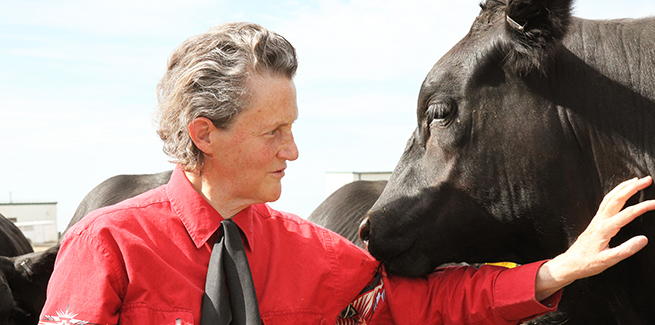Great minds think alike? Think again!

Temple Grandin makes the case for embracing neurodiversity in veterinary medicine in AAHA’s recent webinar
“Why are we pushing algebra so hard?”
Temple Grandin, PhD, MS, asked this question during her recent AAHA Learning Webinar, Embracing Neurodiversity in Veterinary Medicine, in which she discussed the cognitive processes and strengths of neurodiverse individuals in the veterinary field. By the end of her presentation, she wasn’t alone in her algebra-questioning stance.
Many veterinary professionals know Grandin from her pioneering work, which was the subject of a movie, “Temple Grandin” released in 2010, the same year TIME Magazine named her one of the 100 most influential people in the world. These days, she is a distinguished professor of animal science at Colorado State University and the author of Visual Thinking: The Hidden Gifts of People Who Think in Pictures, Patterns, and Abstractions—and she considers herself an extreme visual thinker.
“That makes me really good at some things,” she said (such as understanding how complex machinery works or identifying a potential problem or risk at a glance), “and not so good at things like algebra, for example.”
Realizing that great minds do not all think alike is the first step in understanding the advantage of having different types of thinkers—including neurodiverse individuals—on a team or a project. But gaining that understanding is easier said than done.
In fact, Grandin herself assumed everybody thought like her—in pictures—until she was in her twenties. It blew her mind to learn that wasn’t the case.
Different minds, different strengths
Different types of thinkers have their own strengths and weaknesses, which means they may thrive—or struggle—in certain careers. However, Grandin explained that most of us are not entirely one type of thinker, but a mix of the following:
- Object visualizers think in pictures or photographs and learn best by looking at pictures. These folks tend to be creative and can see the whole scope of a project but can struggle with planning. Sequence is difficult for these individuals without a checklist to keep them on task.
- Spatial visualizers tend to see clear mathematical patterns. They often learn well with a mix of pictures and text. If object visualizers are the architects who create a beautiful, functional building, spatial visualizers are the engineers who make sure the building is structurally sound.
- Verbal minds think in words and tend to have sequential thoughts. They may plan from the top-down, linearly, but this can lead them to miss detail.
Unique types of minds can bring something special to veterinary medicine. However, they’ll only thrive if the practices where they work understand how to communicate, accommodate, and collaborate with neurodiverse individuals—including those on the autism spectrum.
Connecting with Dr. Temple Grandin
It’s clear that many in the veterinary profession are keen to embrace neurodiversity, as this webinar saw a record 1,500 registrations.
“We have gotten wonderful feedback from our attendees,” said AAHA Learning Programs Manager Judy Rose Lanier, CVPM, CVA, DES, VEMM. “A lot of the comments were directed towards thanking us for bringing the talents and skills of those that are neurodiverse to light. Also, a lot of people are big fans of Dr. Temple Grandin and they felt this webinar was a great way to connect with her in a small way. They were able to ask her questions in the Q&A chat.”
Lucy Grieve, MA VetMB, MRCVS, Veterinary Projects Officer for the British Equine Veterinary Association (BEVA), watched from the United Kingdom and expressed appreciation that the webinar was free to people all over the world. She said Grandin has been her hero since she was a child.
“We have been trying to raise awareness of neurodiversity in our profession to better understand the needs and skills our team members bring to the workplace,” Grieve said, adding that she learned so much and “laughed so hard” that she wants to watch it again.
See for yourself
For those who missed the live webinar, it’s not too late—you can access it, and many other webinars and courses, on AAHA Learning. (You do not need to be an AAHA member, but you will need to create an account if you haven’t already done so.)
And there’s more where that came from, said Lanier.
“Our team is working hard to develop learning programs that are inclusive so that every member of the veterinary team can benefit from them,” she said. “We want the learner to be able to utilize the information they are receiving right away. We also want our programs to help our learners with personal and professional development.”
Connect with us on social, and bookmark aaha.org/webinars to stay up to date with upcoming AAHA free CE!
Disclaimer: The views expressed, and topics discussed, in any NEWStat column or article are intended to inform, educate, or entertain, and do not represent an official position by the American Animal Hospital Association (AAHA) or its Board of Directors.



